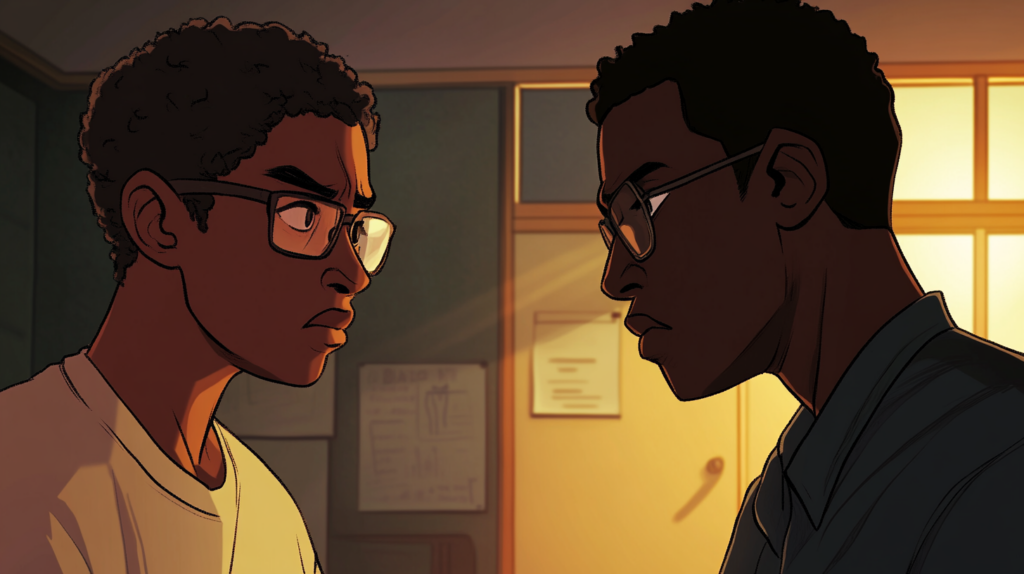The Changing Landscape of Respect
Remember the classic scene in many Nigerian classrooms? The teacher, cane in hand, maintains order with an air of authority. It’s a picture many of us grew up with. But times are changing. Caning is (thankfully) fading out, but a new challenge has emerged: students bullying teachers.
Yes, you read that right!
While we often hear about student-on-student bullying, the bullying of teachers is a growing concern, according to research. It may not always involve physical violence; it can be far more subtle and insidious.
This article aims to illuminate this often-overlooked issue, exploring how classroom dynamics are evolving in Nigeria and the implications for our educators.
The Shifting Sands of Power in Nigerian Classrooms
Caning was the go-to method for maintaining discipline in Nigerian schools for decades. Teachers held the cane as a symbol of authority, and students, fearing its sting, generally fell in line.
But as society progressed, so did our attitudes towards physical punishment. The move away from caning was intended as a step forward, aiming to create a more positive and respectful learning environment.

However, this shift has had unforeseen consequences. Without the cane, some students began testing boundaries in ways previously unimaginable. The power balance in classrooms started to change, giving rise to a new problem: students bullying teachers.
This once-unthinkable phenomenon is becoming increasingly common, leaving educators struggling to maintain control and respect in their classrooms.
The Many Faces of Teacher Bullying
Bullying in the classroom isn’t limited to student-on-student interactions. Teachers, too, find themselves targets of various forms of harassment from their students. Here are some examples:
Verbal Abuse
Imagine a teacher mid-lesson suddenly called “old” or “useless” by a student. The ensuing laughter adds insult to injury. It’s not just disrespectful; it’s demoralising. Teachers, figures meant to command respect, find themselves belittled by those they are there to guide.
Passive Defiance
There’s also the silent rebellion. Students blatantly ignore instructions, chat while the teacher speaks, or even walk out of the classroom without permission. This behaviour disrupts learning and makes it nearly impossible for the teacher to maintain order or teach effectively.
Intimidation
Some students resort to intimidation tactics. They might stand too close, use threatening language, or damage the teacher’s belongings. This creates a climate of fear and anxiety, making teachers feel unsafe in their classrooms.
Cyberbullying
In today’s digital age, bullying has a new battleground: the internet. Teachers have discovered fake social media profiles created in their names, filled with embarrassing photos and derogatory comments.
WhatsApp groups where students share private information and spread lies about teachers are also on the rise. This cyberbullying extends the harassment beyond school, invading teachers’ personal lives.

Physical Violence
While rare, physical violence against teachers does occur. There have been cases of teachers being pushed while confiscating phones or having objects thrown at them in anger. These incidents, though infrequent, are serious and highlight the extremes to which some students will go.
Real-Life Accounts: Teachers’ Stories
To truly grasp the seriousness of this issue, let’s hear from the teachers themselves. Their stories paint a stark picture of the daily challenges they face.
- Mrs Judith: A seasoned teacher with over 20 years of experience, she never thought she’d be called an “old hag” by a student in the middle of a lesson. The class erupted in laughter, and despite her efforts to regain control, the damage was done. “It felt like a punch to the gut,” she recalls. “I was humiliated in front of my students.”
- Mr. Chukwu: A young teacher fresh out of university, faced different kinds of bullying. One day, a student stood up, walked over to his desk, and slammed his fist down, glaring at him. “I was terrified,” he admits. “I didn’t know if he was going to hit me or just scare me. Either way, I felt powerless.”
- Ms Eze: She discovered a fake Instagram account in her name, filled with doctored photos and nasty comments. “It was like a nightmare,” she says. “Students were sharing it, laughing at me behind my back. It made me dread going to school.”
These stories are just the tip of the iceberg. They highlight the various forms of bullying teachers endure, often in silence, and the profound impact it has on their lives.
The Psychological Impact: The Hidden Wounds of Teacher Bullying
The emotional toll of being bullied by students is immense. Teachers, who enter the profession with a passion for education, find themselves battling fear, anxiety, and helplessness. The constant stress of facing disrespect and intimidation can lead to serious mental health issues, including depression and burnout.
Imagine trying to teach while constantly looking over your shoulder, wondering if today will be the day a student crosses the line. This environment makes it incredibly difficult for teachers to do their jobs effectively. Their focus shifts from teaching to mere survival.

The long-term consequences can be devastating. Some teachers may leave the profession altogether, unable to cope with the relentless pressure. Others might stay, but with diminished enthusiasm and effectiveness, ultimately impacting the quality of education students receive.
The ripple effect of this issue extends far beyond individual teachers, affecting the entire educational system.
Unpacking the “Why”: Understanding the Roots of Pupil Bullying of Teachers
Several factors contribute to why students might bully teachers:
- Changing Attitudes Towards Authority: Respect for adults, including teachers, has diminished over time. This shift can be worsened when parents argue with teachers in front of their children, sending mixed messages about authority.
- Lack of Consequences at Home: When students face no repercussions for misbehaviour at home, they may struggle to understand the importance of following rules at school.
- Desire for Popularity: Some students believe bullying a teacher will make them more popular with their peers, leading them to engage in such behaviour to appear “cool.”
- Anonymity Online: The internet provides a shield of anonymity, allowing students to post hurtful comments without facing immediate consequences, which can embolden them.
- Lack of Support for Teachers: Many educators feel unsupported by school administration, leading to a reluctance to report bullying incidents for fear of repercussions.
- Teacher’s Demeanour: A teacher’s personality can influence student behaviour. If a teacher is perceived as timid or unable to maintain control, some students may feel empowered to bully them.
- Inconsistent Expectations: In the absence of clear and consistently enforced rules regarding behaviour, students may believe they can act without accountability.
Turning the Tide: A Collective Effort to Combat Teacher Bullying

Addressing this issue requires a collaborative approach involving everyone interested in creating a positive school environment.
- Cultivating a Respectful School Culture: Schools should establish clear rules and fair consequences for misbehaviour. Encouraging collaboration between teachers and students in creating classroom rules can create a sense of ownership and responsibility. Rewarding positive behaviour can further enhance this environment.
- Empowering Teachers: Educators need training on managing disruptive behaviour and preventing bullying. Schools should facilitate open communication channels for teachers to report incidents of bullying. For instance, schools offer workshops specifically designed to equip teachers with strategies for handling challenging situations.
- Engaging Parents: Parents must be informed about the dynamics at school and encouraged to promote good behaviour at home. Collaborative efforts between schools and parents can strengthen this initiative. Parent-teacher meetings should be focused on creating a respectful and safe school environment.
- Addressing Online Bullying: Schools should educate students about the dangers of online bullying and implement consequences for those who engage in it. Envision programmes that teach students how to navigate the internet responsibly and safely.
- Providing Support for Teachers: Teachers who experience bullying need access to supportive resources. Schools could establish support groups or provide opportunities for teachers to speak with counsellors, creating a safe space for them to share their experiences.
- Enhancing Classroom Management Skills: Teachers can benefit from professional development in effective classroom management techniques. This may include attending courses or seeking mentorship from experienced colleagues.
Setting clear boundaries and consistently enforcing them is essential for maintaining a positive classroom atmosphere.
Conclusion
The issue of students bullying teachers in Nigeria demands immediate and comprehensive action. By creating a culture of respect, empowering educators, engaging parents, addressing online bullying, providing support for teachers, and enhancing classroom management skills, we can collectively work towards creating a safe and nurturing learning environment for everyone.
It is crucial to remember that schools are not just institutions of learning; they are communities where respect, safety, and well-being must be upheld for all members.




2 Comments
This is a great content. Very educative and apt
Very lucid and well written